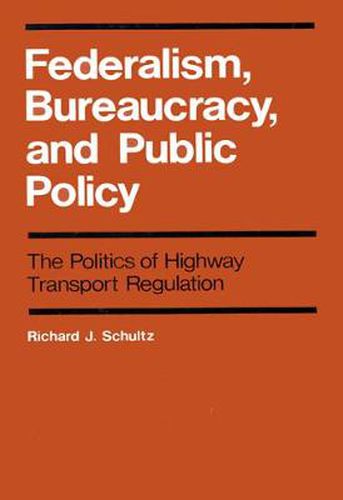Readings Newsletter
Become a Readings Member to make your shopping experience even easier.
Sign in or sign up for free!
You’re not far away from qualifying for FREE standard shipping within Australia
You’ve qualified for FREE standard shipping within Australia
The cart is loading…






In this book Richard J. Schultz analyses the political process which resulted in a major section of the 1967 National Transportation Act-Part III, which deals with highway transport regulation-never being implemented. In effect, he presents us with a case study of an act that has not become law. In his analysis Professor Schultz employs two models to explain the fate of Part III: the first is the unitary actor model, common to the study of Canadian intergovernmental relations; the second is the far less commonly used bureaucratic politics model. He finds the first model leaves unanswered too many critical questions, while the second, with its emphasis on the forces that give rise to internal conflict and competition and the consequent colouring this can give to negotiations between governments, offers a more comprehensive explanation of the stalemate that resulted in the shelving of Part III. Using the analysis of the particular case study, the book discusses the broader issues of the underlying dynamics of both intergovernmental and intragovernmental relations in Canada. The study challenges some of the common assumptions about the nature of the policy process within a parliamentary system, and suggests in particular that central agencies may not exercise the degree of control frequently ascribed to them and, more significantly, that power and influence are much more widely dispersed and diffused within our parliamentary system than is generally acknowledged.
$9.00 standard shipping within Australia
FREE standard shipping within Australia for orders over $100.00
Express & International shipping calculated at checkout
In this book Richard J. Schultz analyses the political process which resulted in a major section of the 1967 National Transportation Act-Part III, which deals with highway transport regulation-never being implemented. In effect, he presents us with a case study of an act that has not become law. In his analysis Professor Schultz employs two models to explain the fate of Part III: the first is the unitary actor model, common to the study of Canadian intergovernmental relations; the second is the far less commonly used bureaucratic politics model. He finds the first model leaves unanswered too many critical questions, while the second, with its emphasis on the forces that give rise to internal conflict and competition and the consequent colouring this can give to negotiations between governments, offers a more comprehensive explanation of the stalemate that resulted in the shelving of Part III. Using the analysis of the particular case study, the book discusses the broader issues of the underlying dynamics of both intergovernmental and intragovernmental relations in Canada. The study challenges some of the common assumptions about the nature of the policy process within a parliamentary system, and suggests in particular that central agencies may not exercise the degree of control frequently ascribed to them and, more significantly, that power and influence are much more widely dispersed and diffused within our parliamentary system than is generally acknowledged.